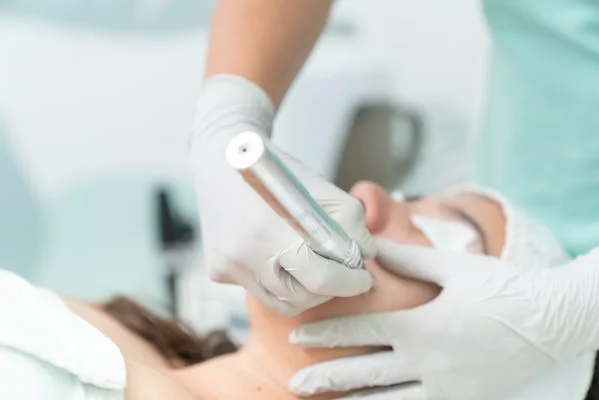Esthetics, often referred to as the art and science of skincare, is an exciting career choice for those passionate about beauty and health. The role of an esthetician is diverse and involves a variety of services that enhance skin health, beauty, and wellness. Whether you’re looking to become an esthetician or you’re simply curious about the education required for this profession, this article covers everything you need to know. In this guide, we will discuss the basic esthetician education, what you need to study, and how to start your journey in this rewarding career. We will also touch on various certifications, programs, and additional skills that can boost your career in esthetics.
What Is Esthetician Education?
Esthetician education is the foundational training required for individuals who wish to pursue a career in the beauty and skincare industry. It equips students with the knowledge and skills needed to perform a wide range of treatments aimed at improving the health and appearance of the skin. This includes facials, hair removal, skin analysis, makeup application, and more.
Core Components of Esthetician Education
To become a licensed esthetician, you must complete a structured education program that covers essential topics. These programs vary depending on the country or state, but the core elements remain relatively the same. Here’s an overview of what the basic esthetician education typically includes:
1. Skin Anatomy and Physiology
A strong understanding of skin anatomy and physiology is fundamental for estheticians. Students learn how skin functions, its layers, and its role in overall health. This knowledge is essential when assessing clients’ skin types and conditions to provide customized treatments.
2. Skin Care Techniques
In this segment of esthetician education, students are taught various skincare techniques such as facials, masks, and exfoliation. They learn how to use different products and tools to cleanse, hydrate, and rejuvenate the skin. Proper techniques ensure that treatments are effective and safe for clients.
3. Hair Removal Methods
Hair removal is one of the most requested services in the beauty industry. Estheticians are trained in various techniques, including waxing, threading, and sugaring. Understanding these techniques and when to use them based on skin type and hair growth is an integral part of esthetician education.
4. Facial Treatments and Mask Application
Facials are a primary service provided by estheticians. Students are taught how to analyze skin conditions, select appropriate products, and apply various treatments for rejuvenation. Mask applications are also covered, as these provide hydration, tightening, and other benefits to the skin.
5. Makeup Application and Techniques
Makeup application is another key component of esthetician education. Estheticians learn how to apply makeup for different occasions, such as bridal, fashion, and daily wear. They also learn about color theory, skin tones, and how to enhance a client’s features with makeup.
How Long Does Esthetician Education Take?
The duration of esthetician education varies depending on the program and location. Typically, the training can take anywhere from 600 to 1,500 hours of coursework. The specific number of hours required for certification may depend on the state or country in which you plan to work.
Esthetician programs often last between 6 months and 2 years, and they combine theoretical learning with practical hands-on experience. Some states may also require estheticians to complete continuing education to maintain their licensure and stay up-to-date on industry trends.
Required Certifications for Estheticians
In most places, a state or national certification is required to work as an esthetician. While requirements may vary, here are the common steps to obtaining certification:
1. Complete an Accredited Esthetician Program
The first step toward certification is to complete an accredited esthetician program. This ensures you receive the appropriate training in skincare, facial treatments, hair removal, and other esthetic services.
2. Pass Written and Practical Exams
After completing the education program, aspiring estheticians must pass both written and practical exams. These exams test your knowledge of skincare techniques, safety protocols, sanitation practices, and more.
3. Obtain a License
Once you have passed the exams, you can apply for a state or national esthetician license. Licensing requirements may differ depending on your location, but the general process is similar worldwide.
4. Continuing Education
To keep your certification active, you may need to complete ongoing training or continuing education courses. These courses keep estheticians up-to-date on the latest trends, techniques, and regulations in the beauty industry.
Additional Skills That Enhance Esthetician Education
While formal education and certification are crucial, there are other skills that can further enhance an esthetician’s career:
1. Communication Skills
Estheticians must be able to communicate clearly and effectively with clients. This includes discussing their skin care needs, explaining treatment options, and offering professional advice. Good communication helps build trust and rapport with clients.
2. Attention to Detail
Attention to detail is key when performing facials, applying makeup, or performing any other esthetic services. Estheticians need to observe clients’ skin conditions carefully and choose the right products and treatments accordingly.
3. Customer Service
Customer service skills are essential for a successful career as an esthetician. Providing a pleasant and comfortable experience for clients ensures repeat business and helps establish a loyal client base.
4. Time Management
Estheticians often work with multiple clients throughout the day, so time management is crucial. Being able to complete treatments within the scheduled time while ensuring the highest quality is an important skill for success.
Career Opportunities for Estheticians
Once you’ve completed your basic esthetician education and obtained your certification, you can explore various career opportunities:
1. Spa and Salon Esthetician
Many estheticians work in spas and salons, offering facials, skin treatments, and makeup services. These environments provide a wide range of clients and can offer a fulfilling career in beauty.
2. Medical Esthetics
Some estheticians specialize in medical esthetics, working alongside dermatologists or plastic surgeons. This includes providing more advanced skin treatments such as chemical peels, microdermabrasion, and laser hair removal.
3. Freelance Esthetician
For those who prefer flexibility, becoming a freelance esthetician is an option. Freelancers offer their services at clients’ homes, events, or in pop-up locations. This offers more independence and a chance to set your own schedule.
4. Esthetics Educator
After gaining experience, some estheticians choose to teach the next generation of beauty professionals. Esthetics educators train students in various techniques, from facials to makeup, at beauty schools or community colleges.
Conclusion
Becoming an esthetician requires a combination of formal education, hands-on training, and certifications. Basic esthetician education covers a variety of essential topics such as skincare, facials, hair removal, and makeup application. Additionally, estheticians must pass written and practical exams to obtain licensure. Continuing education ensures they stay updated with the latest techniques and trends.
FAQs About Esthetician Education
1. What is the basic education required to become an esthetician?
To become an esthetician, you must complete an accredited education program, which generally includes a mix of theoretical coursework and practical, hands-on training. These programs cover topics such as skin anatomy, facials, hair removal, makeup application, and more. Upon completion, you must pass written and practical exams to obtain licensure.
2. How long does it take to become an esthetician?
The duration of esthetician education varies depending on the program and location. Typically, it takes between 600 to 1,500 hours of coursework, which could take anywhere from 6 months to 2 years to complete. The time required for certification can also differ based on state or country regulations.
3. Do I need a license to work as an esthetician?
Yes, in most states and countries, you need to obtain a license to work as an esthetician. After completing an accredited program, you must pass a written and practical exam. Once you have passed the exam, you can apply for licensure. Some regions also require continuing education to maintain your certification.
4. What are the most important skills for an esthetician?
Besides technical knowledge, estheticians need strong communication skills to interact effectively with clients. Attention to detail, customer service, and time management are also crucial to providing high-quality services. These skills help build rapport with clients and ensure that treatments are completed efficiently and effectively.
5. Can estheticians work in medical settings?
Yes, some estheticians specialize in medical esthetics. They work alongside dermatologists and plastic surgeons, performing advanced treatments such as chemical peels, microdermabrasion, and laser hair removal. Medical estheticians often have additional training and certification in these more specialized procedures.





